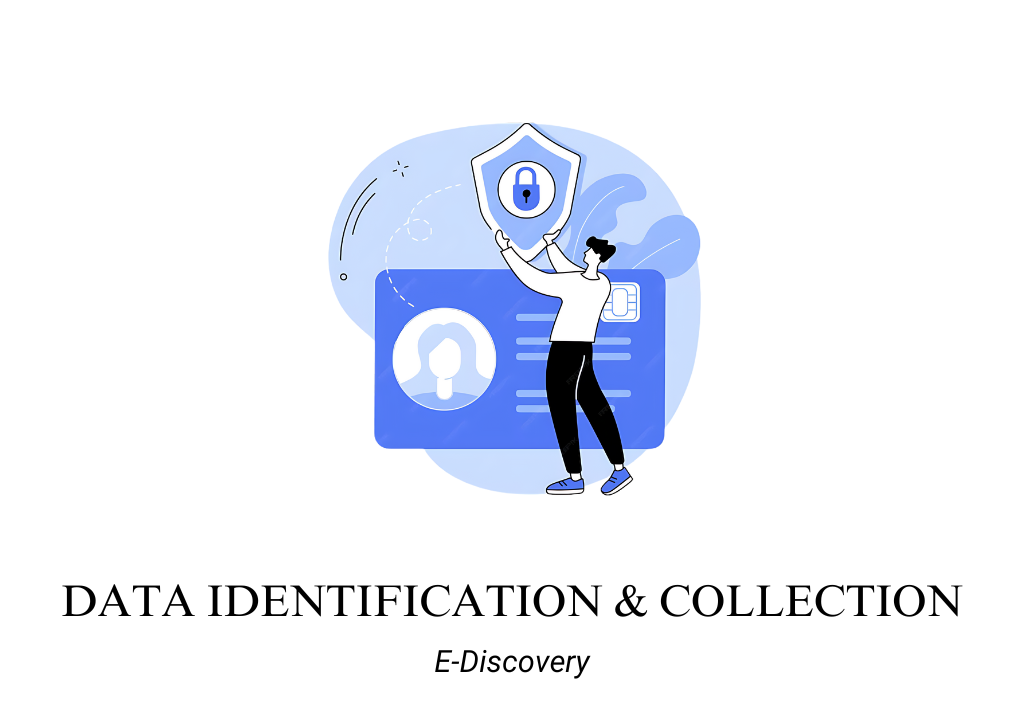Introduction
Data identification & collection is a fundamental functionality within e-discovery tools that involves the systematic identification, gathering, and preservation of electronically stored information (ESI) that is relevant to a legal matter. This process includes locating potential sources of data, extracting the necessary information, and ensuring that the data is collected in a manner that maintains its integrity for legal review and production. It is a critical step in the e-discovery process, as it lays the foundation for all subsequent stages, including data processing, review, and analysis.
Purpose
The purpose of data identification & collection is to ensure that all relevant digital evidence is identified and preserved early in the legal process. This functionality is designed to minimize the risk of spoliation (alteration or destruction of evidence) and to ensure that the data can be used effectively in legal proceedings. By accurately identifying and collecting data, legal teams can build a comprehensive and defensible case, comply with legal obligations, and avoid potential penalties or sanctions.
Benefits
- Comprehensive Data Capture: Ensures that all potentially relevant data sources are identified and included in the collection process, reducing the risk of missing critical evidence.
- Data Integrity: Maintains the integrity of collected data, ensuring that it remains unaltered and legally admissible.
- Efficiency: Streamlines the collection process by using automated tools to gather large volumes of data quickly and accurately.
- Compliance: Helps organizations meet legal and regulatory requirements for data preservation and production.
- Risk Mitigation: Reduces the risk of data spoliation and associated legal sanctions by ensuring proper handling and documentation of collected data.
CHECK MORE: Guide to find best E-Discovery tools for lawyers
Features
Data Source Identification
- Meaning: Data source identification is a feature that enables legal teams to locate and catalog all potential sources of electronically stored information (ESI) relevant to a legal matter. This includes identifying devices, networks, databases, cloud storage, email systems, and any other repositories where relevant data might be stored.
- Purpose: The purpose of data source identification is to ensure a thorough and defensible search for relevant information. By systematically identifying all potential data sources, this feature helps legal teams ensure that no critical information is overlooked, which is essential for building a comprehensive case and complying with legal obligations.
- Use Cases:
- Litigation: A law firm uses data source identification to map out all potential sources of evidence within a client’s organization, including emails, document management systems, and employee devices, ensuring that all relevant data is accounted for.
- Internal Investigations: A corporation’s legal department leverages data source identification to locate all repositories of information that might contain evidence of a policy violation or misconduct.
Remote Collection
- Meaning: Remote collection is a feature that allows legal teams to collect data from various sources without physically accessing the devices or locations where the data is stored. This process typically involves using secure, internet-based methods to extract data from remote servers, cloud platforms, or devices located in different geographical locations.
- Purpose: The purpose of remote collection is to facilitate the gathering of data from geographically dispersed sources quickly and efficiently. It also minimizes disruptions to business operations by allowing data to be collected without the need for physical access to devices or locations. This is particularly useful in situations where devices are in different cities, countries, or where physical access is not feasible.
- Use Cases:
- Cross-Border Litigation: An international law firm uses remote collection to gather data from servers located in multiple countries, ensuring that relevant information is collected promptly and securely without the need for on-site visits.
- Corporate Investigations: A company conducting an internal investigation uses remote collection to retrieve data from employees’ devices across various offices worldwide, ensuring that the investigation proceeds quickly and without logistical delays.
Network-Based Collection
- Meaning: Network-based collection is a feature that allows the extraction of data directly from an organization’s network infrastructure. This includes collecting data from servers, databases, network drives, and other network-connected storage systems, often in real-time or with minimal impact on network performance.
- Purpose: The purpose of network-based collection is to enable the comprehensive and efficient gathering of data from centralized sources within an organization’s IT infrastructure. This method is particularly useful for collecting large volumes of data, ensuring that all relevant information is captured from the network with minimal disruption to ongoing operations.
- Use Cases:
- Enterprise Data Collection: An in-house legal team uses network-based collection to gather data from the company’s centralized servers and databases as part of a discovery process, ensuring that all relevant documents and communications are captured for legal review.
- Regulatory Compliance: A financial institution employs network-based collection to comply with regulatory inquiries, collecting relevant transaction records and communications directly from its network storage systems.
Forensic Imaging
- Meaning: Forensic imaging is a feature that involves creating an exact, bit-by-bit copy of a storage device, capturing all data, including deleted files and metadata, while preserving the original structure and content of the data. This digital replica can be analyzed without altering the original device, making it essential for legal investigations and preserving evidence integrity.
- Purpose: The purpose of forensic imaging is to preserve the integrity of digital evidence by creating a precise and unaltered copy of a storage device. This ensures that the original data remains untouched and can be presented in court as reliable evidence. Forensic imaging is crucial in cases where the authenticity and integrity of the data are paramount.
- Use Cases:
- Criminal Investigations: Law enforcement agencies use forensic imaging to create exact copies of suspects’ devices, ensuring that all evidence is preserved for analysis and legal proceedings.
- Data Breach Investigations: A cybersecurity firm uses forensic imaging to analyze the contents of compromised servers, preserving the original data while conducting a thorough investigation into the breach.
Custodian Self-Collection
- Meaning: Custodian self-collection is a feature that allows individuals (custodians) responsible for specific data sets to collect and submit their data directly for e-discovery purposes. This process is typically guided by software that ensures the correct data is collected and that proper protocols are followed to maintain data integrity.
- Purpose: The purpose of custodian self-collection is to empower data custodians to gather relevant data themselves, reducing the burden on IT and legal teams. It also ensures that data is collected from individuals who have direct access to and control over the information, potentially speeding up the discovery process and reducing costs.
- Use Cases:
- Internal Legal Investigations: A company allows employees involved in a legal investigation to use a custodian self-collection tool to gather and submit relevant emails and documents, streamlining the data collection process.
- Litigation Readiness: A law firm advises its clients to implement custodian self-collection tools to ensure that key employees can quickly gather and preserve relevant data when litigation is anticipated.
Validation Mechanisms
- Meaning: Validation mechanisms are features that ensure the accuracy, completeness, and integrity of data collected during the e-discovery process. These mechanisms may include checksums, hash values, and other verification methods that confirm that the data collected matches the original source and has not been altered during the collection process.
- Purpose: The purpose of validation mechanisms is to provide a defensible and reliable method of verifying that the data collected is accurate and unchanged. This is crucial for maintaining the integrity of the evidence and ensuring that it can be confidently used in legal proceedings. Validation mechanisms are essential for establishing the chain of custody and demonstrating that the data has been handled according to legal standards.
- Use Cases:
- Litigation Support: A law firm uses validation mechanisms to verify that the data collected from a client’s systems matches the original source, ensuring that the evidence is admissible in court.
- Regulatory Audits: An organization undergoing a regulatory audit uses validation mechanisms to demonstrate that the data provided to regulators is complete, accurate, and has not been tampered with during the collection process.
Conclusion
These features within the data identification and collection functionality are critical for ensuring that e-discovery processes are thorough, accurate, and legally defensible. By leveraging these features, legal teams can efficiently gather and preserve relevant electronic evidence while maintaining the highest standards of data integrity and compliance.
CHECK OUT E-DISCOVERY TOOLS ON DIRECTORY OR CLICK HERE


